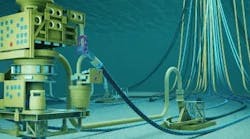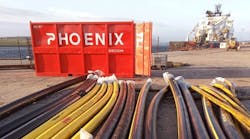The oil and gas industry has been an attractive investment for more than a century. Since the first recorded subsea wells were drilled in the late 19th century, subsurface engineering and developments were the pinnacle of a modern-day commercial success.
Today, operators and companies in the supply chain have to adapt to a myriad of variables, including differing client processes and regional regulations. The subsea industry has, however, come up against three significant challenges within the last 10 years which have changed the technical approach to projects, and how they are financed, forever.
The first was the emergence of shale extraction in the US, which grew significantly, and somewhat unexpectedly, lessening the global reliance on subsea drilling to grow reserves and production. The second is the global movement to reduce dependence on fossil fuels; and third, of course, was the biggest oil and gas downturn we have seen in many years.
Looking at these factors together, it is no surprise that capex and opex spending by offshore operators has been squeezed within the last decade, in some instances by up to 50%.
Five years on, producers find themselves at a crossroads. How does the industry become leaner and more efficient for the future while maximizing production in some of the most challenging environments they have ever faced?
To meet this demand, a total expenditure (totex) approach to managing and operating assets and projects is starting to emerge as an attractive approach to project fiscal management.
In the past, operators have largely used capex as the main way of sanctioning large infrastructure developments. However, elements of the supply chain are encouraging an alternative way of analyzing finances. The totex (capex plus opex) approach looks at the total cost of expenditure, over the long term.
As the demand for new infrastructure, technology and digital solutions grows, the totex approach has become an increasingly popular analytical tool. It enables asset owners to enhance how they manage and mitigate the risk associated with large capital projects such as developing new fields, or extending the life of existing ones through the use of tieback technology.
In parallel with totex, commercial collaboration has begun to extend beyond technology development to mutually beneficial commercial agreements.
The concept of collaboration has also been critical to the recovery. Across the board, the trend in recent years has been for far closer operator/service company relationships. This trend has been necessitated to a large extent by the loss of experienced minds in the downturn and the emergence of many new, smaller operators in areas like the UK continental shelf.
One of the biggest challenges has been the change of operatorship in this region over the last four to five years. Where there used to be five to seven very big operators, today we see a huge increase in the number of operators. A number of these are relatively small. These smaller companies require large-scale support from the supply chain in order to function.
The push from these companies is two-fold: increased reliance on the supply chain for efficiencies of course, but also for industry expertise and commercial feasibility.
In this new commercial environment, the challenge for service companies is stark. The industry needs solutions that are both technically proficient and cost efficient. While it has been a challenging period, the market is now seeing a resurgence of the subsea supply chain. It is a sector that has had to re-evaluate itself and how it operates on almost every level. Surviving companies in this sector have had to emerge stronger, more fit for today’s market, with new ideas and initiatives.
Encouragingly, this is happening. Supply chain companies have gone back to basic fundamentals to create an approach built on four basic pillars: engaging early with customers; delivering fit-for-purpose integrated technology; flexible commercial partnerships and commercial collaboration; and real-time data management, diagnostics and life-of-field (LOF) management. Central to the idea is the totex and LOF management, and a fundamental re-think as to how they engage with operators.
One such development is the advent of Subsea Connect, a new reservoir-to-topsides technology that makes use of lightweight, modular subsea technologies that can help offshore operators lower the total cost of ownership for the full life of the field.
By leveraging these new operational models, the industry will serve as an example to others. Its success will be driven by the mutually beneficial nature of totex, with individuals at all levels delivering value and creating a new generation to act as the new pioneers for field development and asset longevity to the benefit of the whole industry, including the supply chain, for decades to come.
Romain Chambault
Director Europe—Oilfield Equipment
Baker Hughes, a GE company





